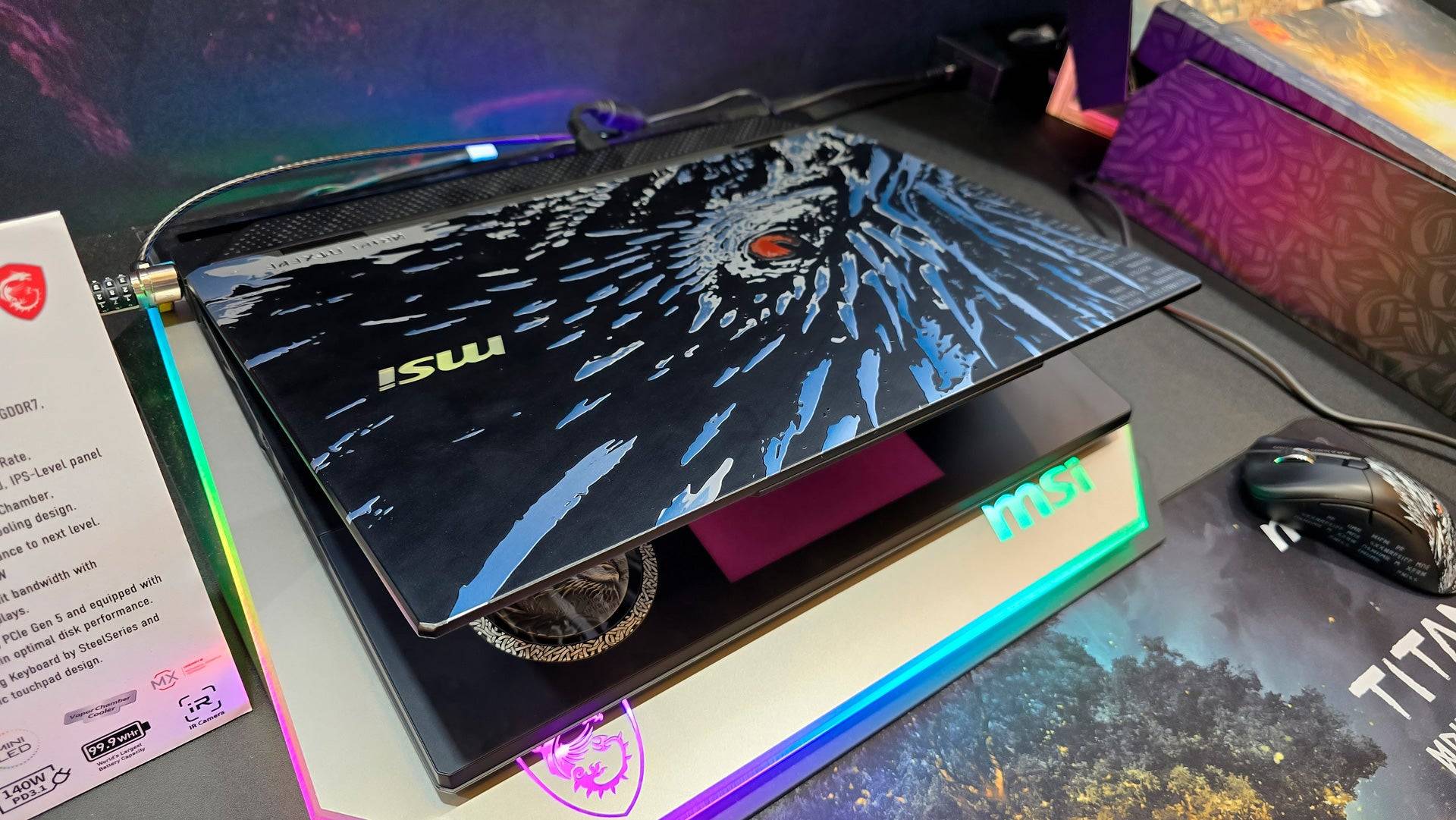CES never disappoints when it comes to showcasing the latest in laptops, and this year's event was a treasure trove of innovations in gaming laptops. I explored the bustling show floor and numerous packed suites to pinpoint the key trends shaping the gaming laptop landscape for the year ahead. Here are the standout themes that defined the future of gaming laptops at CES.
A Huge Diversity of Designs
Gaming laptops have always varied in style, but this year's CES felt exceptionally diverse. Brands like Gigabyte and MSI are blurring the lines between productivity and gaming, pushing the envelope in design. High-end gaming laptops are now expected to offer more than just powerful hardware; they need to make a statement.
You can expect to see a broader spectrum of gaming laptops this year. Models like the Gigabyte Aero series are sleek and professional, perfect for business environments. In contrast, the MSI Titan 18 HX AI Dragonforged Edition boasts bold graphics on its lid, clearly signaling its gaming prowess.
 As expected, RGB lighting remains a focal point. From wrap-around lighting rings to illuminated mechanical keyboards and trackpads, the Asus ROG Strix Scar series, with its AniME Dot Matrix LED display, was particularly striking, featuring customizable animations and text on its lid.
As expected, RGB lighting remains a focal point. From wrap-around lighting rings to illuminated mechanical keyboards and trackpads, the Asus ROG Strix Scar series, with its AniME Dot Matrix LED display, was particularly striking, featuring customizable animations and text on its lid.
While the core designs aren't radically new, anticipate seeing fresh novelties alongside the traditional range of bulky, high-performance machines and sleek, lightweight options with various hardware configurations.
 AI Assistants are Coming
AI Assistants are Coming
Last year, AI was touted as a feature for laptops, though the implementations were often underwhelming. At CES this year, multiple vendors showcased AI Assistants designed to control your PC without the need for manual software adjustments.
During a demo, an MSI representative demonstrated how their chatbot could adjust performance settings based on the desired gaming experience. While these systems aim to work offline, I remain skeptical about their efficiency compared to manually tweaking settings. We'll need to wait and see how these AI capabilities are fully realized in the market.
Mini-LED, Rollable Displays and Other Novelties
Mini-LED technology is gaining traction in the gaming laptop market. Asus, MSI, and Gigabyte displayed Mini-LED laptops with top-tier specs and pricing. These devices feature over 1,100 local dimming zones, minimizing blooming, boosting contrast, and delivering vibrant colors. Although OLED still excels in contrast, Mini-LED's absence of burn-in risk and superior sustained brightness are compelling advantages.
There were also intriguing novelties on display. The ASUS ROG Flow X13, back after a hiatus, now supports eGPU through USB4, showcasing its versatility with an RTX 5090 eGPU at the event. Asus also presented the Zenbook Duo, a dual-screen productivity laptop, but Lenovo stole the spotlight with the Lenovo ThinkBook Plus Gen 6 Rollable. This innovative laptop features a rollable OLED display that expands from 14 inches to 16.7 inches at the touch of a button. While the first-generation product raises durability concerns, it's a pioneering step in laptop design that's set to improve with time.
Ultrabooks Continue to Rise, Even for Gaming
Ultrabooks are increasingly prevalent, even within gaming laptop lineups. Major manufacturers now offer slim, lightweight, and premium gaming laptops. Gigabyte, for example, has transformed its Aero series into an Ultrabook format, maintaining both performance and portability.
This trend makes sense for gamers who don't need to max out settings on the latest games. Ultrabooks offer a versatile solution, allowing you to game on the go while also excelling in productivity. As seen in my review of the Asus TUF Gaming A14, these machines can handle dedicated graphics without sacrificing portability.
 For those willing to tweak settings, the latest AMD and Intel processors offer surprisingly good gaming performance. Features like AMD FidelityFX Super Resolution and Intel XeSS, along with frame generation, enable even demanding games to be playable on integrated graphics. This raises questions about the future necessity of low-end GPUs like the RTX 4050M.
For those willing to tweak settings, the latest AMD and Intel processors offer surprisingly good gaming performance. Features like AMD FidelityFX Super Resolution and Intel XeSS, along with frame generation, enable even demanding games to be playable on integrated graphics. This raises questions about the future necessity of low-end GPUs like the RTX 4050M.
Cloud gaming also enhances the appeal of these ultrabooks. Services like Xbox Cloud Gaming and Nvidia GeForce Now provide robust gaming experiences without requiring a dedicated gaming laptop.
The world of gaming laptops is evolving rapidly, and we'll be keeping you updated on these developments throughout the year. What trends caught your eye at CES? Share your thoughts in the comments below!

 Latest Downloads
Latest Downloads
 Downlaod
Downlaod




 Top News
Top News









